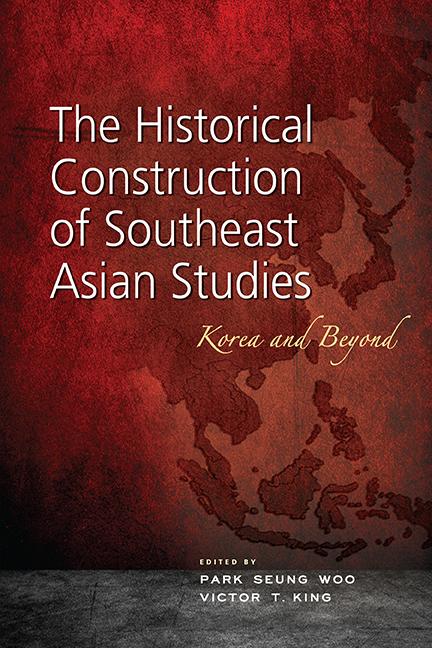Book contents
1 - Introduction: The Historical Construction of Southeast Asian Studies and the Emergence of a Region
Published online by Cambridge University Press: 21 October 2015
Summary
THE CONSTRUCTION OF REGIONS
It is a truism to state that regions are constructed. In our current globalizing world there appears to be an obsession and a need to establish regional organizations of various kinds as well as more disparate groupings of countries sharing certain interests, activities and objectives which in turn can be projected more successfully onto the global stage. It is also an obvious point, but worth making with reference to Southeast Asia, that some regions are much more easily defined and constructed than others, particularly if there is geographical or physical coalescence of some kind, shared histories and identifiable cultural characteristics. Regions also emerged in the context of economic, political and socio-cultural encounters between culturally different populations, especially following the expansion of Western trade, commerce and exploration some 400 years ago and the accompanying need by Western traders, administrators, missionaries and military personnel to map and locate territories and to classify and learn about those who resided there. However, with regard to the scatter of kingdoms, states and tribal groups and the geographical diversity and openness of those territories lying across the great sea routes between the Indian subcontinent and mainland China and Japan Park Seung Woo and Victor T. King and which came to be called “Southeast Asia”, there were special difficulties in identifying and demarcating a region. These difficulties persist.
SOUTHEAST ASIA AS A REGION: ORIENTATIONS
Those who have specialized in the study of Southeast Asia, and particularly those scholars located in Southeast Asian Studies centres, institutes and programmes, have frequently been engaged in debates and disagreements about what defines their region and what is distinctive about it; and this preoccupation has usually been much more intense when compared with the concerns of regionalist specialists in other parts of the world. In other words, Southeast Asianists have sought persistently for a rationale for what they do and, in order to serve their students and those they train, to provide an academic basis for considering the collection of countries and peoples which they are trying to understand as a viable and meaningful unit of analysis and scholarly speculation.
- Type
- Chapter
- Information
- The Historical Construction of Southeast Asian StudiesKorea and Beyond, pp. 1 - 42Publisher: ISEAS–Yusof Ishak InstitutePrint publication year: 2013



